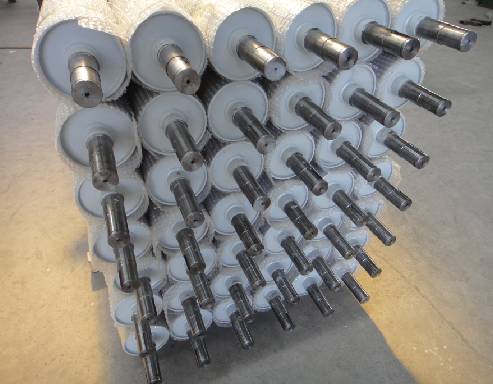 Afrikaans
Afrikaans  Albanian
Albanian  Amharic
Amharic  Arabic
Arabic  Armenian
Armenian  Azerbaijani
Azerbaijani  Basque
Basque  Belarusian
Belarusian  Bengali
Bengali  Bosnian
Bosnian  Bulgarian
Bulgarian  Catalan
Catalan  Cebuano
Cebuano  Corsican
Corsican  Croatian
Croatian  Czech
Czech  Danish
Danish  Dutch
Dutch  English
English  Esperanto
Esperanto  Estonian
Estonian  Finnish
Finnish  French
French  Frisian
Frisian  Galician
Galician  Georgian
Georgian  German
German  Greek
Greek  Gujarati
Gujarati  Haitian Creole
Haitian Creole  hausa
hausa  hawaiian
hawaiian  Hebrew
Hebrew  Hindi
Hindi  Miao
Miao  Hungarian
Hungarian  Icelandic
Icelandic  igbo
igbo  Indonesian
Indonesian  irish
irish  Italian
Italian  Japanese
Japanese  Javanese
Javanese  Kannada
Kannada  kazakh
kazakh  Khmer
Khmer  Rwandese
Rwandese  Korean
Korean  Kurdish
Kurdish  Kyrgyz
Kyrgyz  Lao
Lao  Latin
Latin  Latvian
Latvian  Lithuanian
Lithuanian  Luxembourgish
Luxembourgish  Macedonian
Macedonian  Malgashi
Malgashi  Malay
Malay  Malayalam
Malayalam  Maltese
Maltese  Maori
Maori  Marathi
Marathi  Mongolian
Mongolian  Myanmar
Myanmar  Nepali
Nepali  Norwegian
Norwegian  Norwegian
Norwegian  Occitan
Occitan  Pashto
Pashto  Persian
Persian  Polish
Polish  Portuguese
Portuguese  Punjabi
Punjabi  Romanian
Romanian  Russian
Russian  Samoan
Samoan  Scottish Gaelic
Scottish Gaelic  Serbian
Serbian  Sesotho
Sesotho  Shona
Shona  Sindhi
Sindhi  Sinhala
Sinhala  Slovak
Slovak  Slovenian
Slovenian  Somali
Somali  Spanish
Spanish  Sundanese
Sundanese  Swahili
Swahili  Swedish
Swedish  Tagalog
Tagalog  Tajik
Tajik  Tamil
Tamil  Tatar
Tatar  Telugu
Telugu  Thai
Thai  Turkish
Turkish  Turkmen
Turkmen  Ukrainian
Ukrainian  Urdu
Urdu  Uighur
Uighur  Uzbek
Uzbek  Vietnamese
Vietnamese  Welsh
Welsh  Bantu
Bantu  Yiddish
Yiddish  Yoruba
Yoruba  Zulu
Zulu Understanding the Essential Parts of Conveyor Pulley Systems for Improved Efficiency
Understanding Conveyor Pulley Components Key Elements for Efficient Material Handling
Conveyor systems are vital in various industries, from mining and manufacturing to logistics and food processing. Integral to these systems are the conveyor pulleys, which play a crucial role in the efficiency and effectiveness of material handling. To optimize performance and ensure longevity, it's essential to understand the key components of conveyor pulleys.
Types of Conveyor Pulleys
1. Drive Pulleys These are critical for the movement of the conveyor belt. Drive pulleys are powered by a motor and transfer torque to the belt, allowing it to transport materials. The size and design of the drive pulley can affect the system's capacity and speed.
2. Idler Pulleys Positioned along the conveyor system, idler pulleys support the belt and maintain its tension. These pulleys are essential for maintaining proper alignment and minimizing wear on the belt. Regular maintenance of idler pulleys is important for prolonging the lifespan of the conveyor.
3. Tail Pulleys Located at the opposite end of the drive pulley, tail pulleys help to return the belt back to the drive area. They play a role in guiding the belt and ensuring smooth operation. Tail pulleys often include a take-up mechanism to adjust tension, which is crucial for proper belt operation.
4. Snub Pulleys These pulleys create additional contact angle with the belt and are used to improve the belt's grip on the drive pulley. Snub pulleys can enhance traction, especially in steep incline applications.
Key Components of Conveyor Pulleys
conveyor pulley components

1. Shell The shell of a conveyor pulley is typically made from steel and serves as the outer layer that wraps around the core. It is designed to resist wear caused by the sliding belt and the materials being transported. Proper shell construction is essential for durability and performance.
2. Shaft The shaft is the central component that the pulley rotates around. It must be strong enough to withstand the stresses exerted during operations. Shafts can be reinforced or designed with various profiles to enhance their strength based on different applications.
3. Bearings Bearings are pivotal in reducing friction between the rotating shaft and the pulley. High-quality bearings can significantly improve the efficiency of the system by minimizing energy loss. Regular inspection and replacement of bearings are essential to prevent system failures.
4. Lagging The lagging is a layer applied to the surface of the pulley, enhancing grip between the belt and pulley and reducing slippage. Various materials can be used for lagging, including rubber and ceramic, depending on the application and the materials being transported.
5. End Caps These components secure the shell to the shaft and are critical in maintaining overall structural integrity. Proper design and attachment of end caps are essential to prevent material leakage and ensure safety in operation.
Conclusion
In summary, conveyor pulleys are indispensable components in a conveyor system, significantly impacting its overall performance and efficiency. Understanding the different types of pulleys and their components—such as the shell, shaft, bearings, lagging, and end caps—can help industries optimize their material handling processes. Regular maintenance and timely upgrades of these components can lead to reduced downtime and improved productivity, making them essential for successful operations in today’s competitive market. As technology evolves, the design and materials of conveyor pulley components will continue to improve, ensuring that they meet the ever-increasing demands of various industries.
-
Trusted Conveyor Solutions from Leading Conveyor Idler Roller ManufacturersNewsJun.27,2025
-
Reliable Return Idler Solutions for Efficient Belt Conveyor SystemsNewsJun.27,2025
-
Precision Conveyor Accessories for Streamlined Material HandlingNewsJun.27,2025
-
High-Quality Belt Conveyor Idler Solutions for Efficient Material HandlingNewsJun.27,2025
-
High-Performance Belt Conveyor Pulleys for Reliable Material HandlingNewsJun.27,2025
-
Enhancing Material Handling EfficiencyNewsJun.27,2025





























